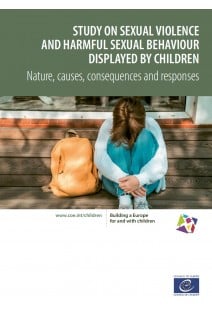LIST OF ACRONYMS AND ABBREVIATIONS PART I. STUDY ON SEXUAL VIOLENCE AND HARMFUL SEXUAL BEHAVIOUR DISPLAYED BY CHILDREN: NATURE, CAUSES, CONSEQUENCES AND RESPONSES
About the author
Scope and purpose of the report
Executive Summary
PART II. INTRODUCTION
1. How to describe the problem of sexual abuse by children
2. The state of the evidence base on children who display harmful sexual behaviours
3. The scale of the problem
4. Framing the problem
PART III. WHAT IS KNOWN ABOUT THE TYPES OF HARMFUL SEXUAL BEHAVIOUR EXHIBITED BY CHILDREN? PART IV. WHAT IS KNOWN ABOUT CHILDREN AND YOUNG PEOPLE WHO DISPLAY HARMFUL SEXUAL BEHAVIOURS?
1. Male adolescents who sexually abuse others
2. Pre-pubescent children with sexual behaviour problems
3. Girls with harmful sexual behaviours
4. Young people with intellectual disabilities who present with harmful sexual behaviours
5. Young people who commit sexual offences facilitated by information and communication technologies
6. Young people who sexually abuse others in the context of groups and gangs
7. Families of young people with harmful sexual behaviours
8. What is known about the impact of children’s harmful sexual behaviours?
PART V. CAUSES AND FACTORS THAT MAY CONTRIBUTE TO HARMFUL SEXUAL BEHAVIOURS
1. Attachment and family problems
2. Prior sexual victimisation
3. Physical abuse, neglect and exposure to family violence
4. Exposure to pornography and lack of sexuality education
5. Masculinity and gender
6. Environmental and institutional factors
PART VI. RESPONSES TO HARMFUL SEXUAL BEHAVIOURS
1. A prevention approach
2. Primary prevention approaches
3. Secondary prevention approaches
4. Tertiary prevention approaches
PART VII. THERAPEUTIC INTERVENTIONS
1. Younger children with problematic sexual behaviours
2. Therapeutic interventions for adolescents with harmful sexual behaviours
3. Developmentally sensitive and holistic approaches
4. Rehabilitative, resilience and desistance approaches
5. Family support approaches
PART VIII. SUMMARY OF KEY LESSONS PRESENTED IN THIS REPORT PART IX. REFERENCES






